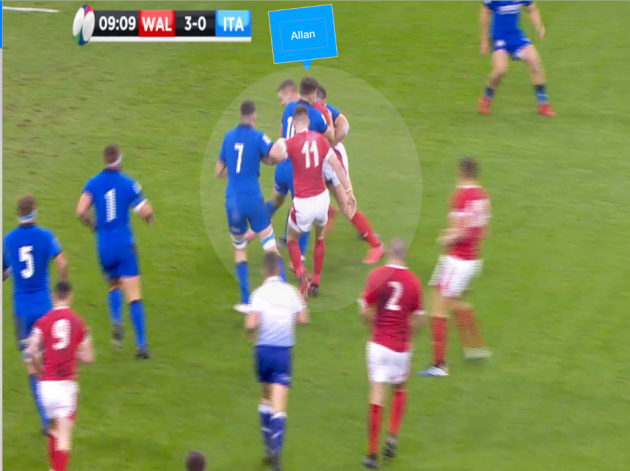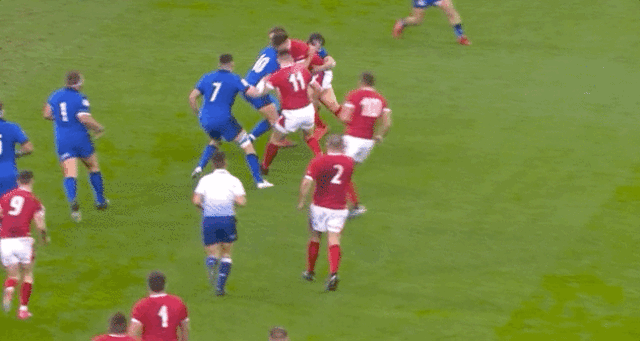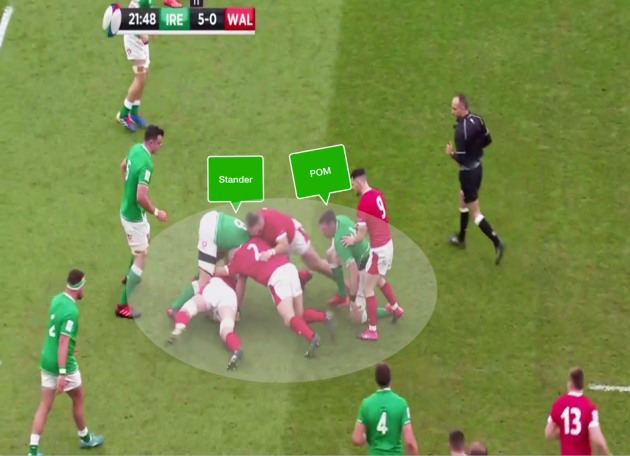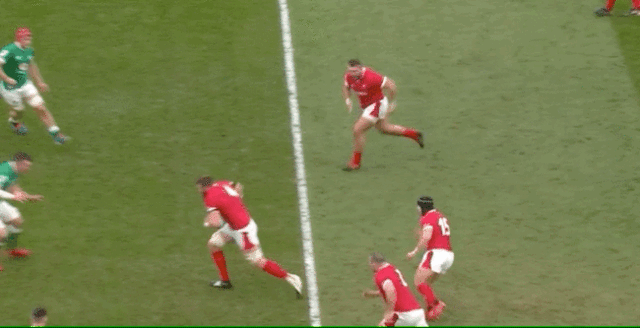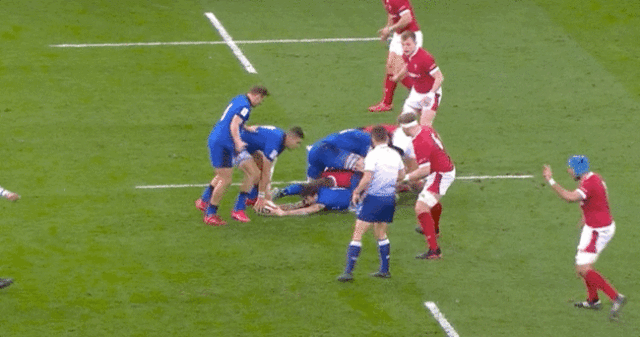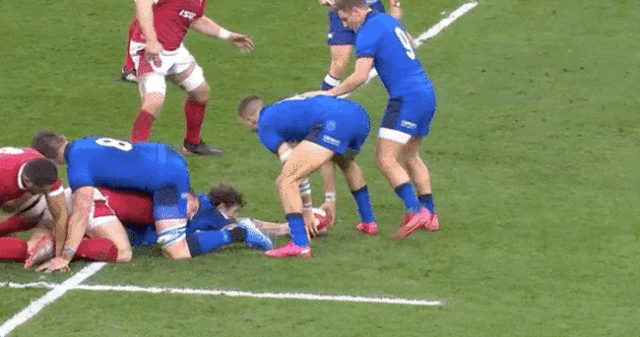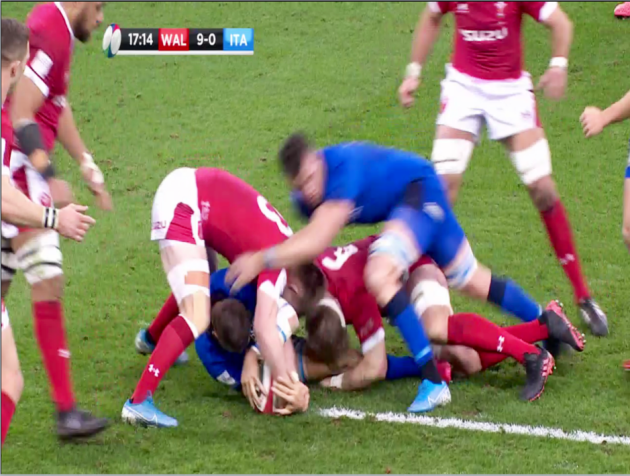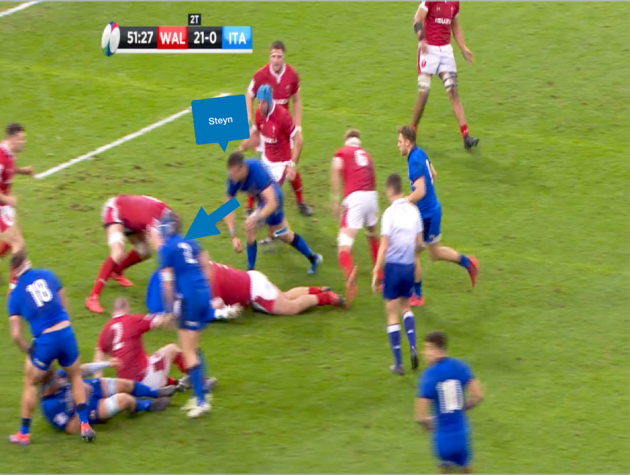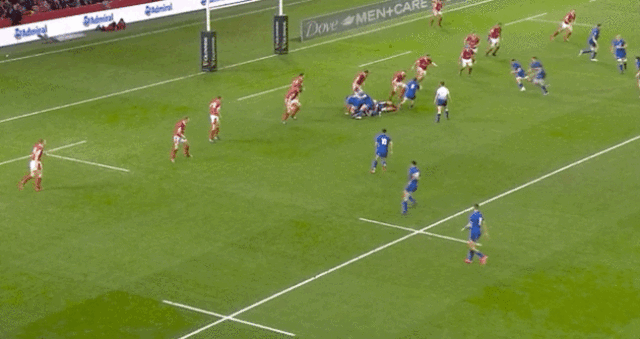THE MODERN-DAY breakdown is a complex beast. For all stakeholders of the game the ruck is an incredibly frustrating area at which, under the current laws of the game, there are technical infringements occurring at an alarmingly frequent rate.
World Rugby have recognised the urgent need to address the situation and appointed a well-qualified working group to troubleshoot and identify potential law variations in Paris last week to protect both the fabric of the game and player welfare.
The primary issue is that the fight for that all-important inch in the contact area is now contested with both an enhanced tactical prowess and athletic velocity that bends the laws of the game and compromises the safety of its participants.
Coaches and players are understandably adopting strategies to maximise impact on both sides of the ball in an area that is so integral to the success of attacking and defensive systems. Contact specialists are now employed to arm players with the required technical and physical skills to be excellent tacklers, ball-carriers, poachers and attacking cleaners.
Strength and conditioning coaches complement this by spending significant time with players both in the gym and on the pitch building physical capability to deliver and withstand force at specific joint angles relative to breakdown positions.
Given these factors, accurate assessment of the breakdown for the referee is now an almost impossible task.
Given the frequency of technical infringements is the onus on the referee to apply the current letter of the law at every collision – bearing in mind there can be upwards of 250 rucks per game – or is he/she responsible for ensuring the game maintains flow for the benefit of the spectators and therefore let potential penalties slide? Or do the laws need a radical overhaul?
This article will assess the current chronological order of reference for the referee when assessing the legality of a breakdown contest, which hopefully will enlighten the reader on the complexities of the challenge and why the wrong call is sometimes made, or the right call missed.
1. The Tackler
The first piece of the jigsaw that is the breakdown is the tackler. Assuming the tackle has been executed legally, the referee will want to see a proactive roll away from the contact area by the tackler to allow a fair contest for possession by both teams.
The tackler is often the most penalised player at the breakdown, normally as a result of losing the collision, which sees the ball carrier finishing beyond the initial contact point and the tackler at the wrong side of the tackle area.
The issue with finishing on the wrong side of the tackle is that a proactive roll isn’t always possible as the arriving cleaners can trap the tackler into the breakdown which makes any attempt to get out very difficult.
In our first example from the Wales v Italy game at the Principality Stadium, Tommaso Allan and Luca Morisi attempt to hold up George North, create a maul and force the turnover. This tactical approach encourages an upright body position for the tackler which means losing the collision is a definite possibility, especially against someone with North’s power.
Crucially in this example, North manages to get a knee to ground to create a tackle situation just as his team-mate Josh Adams joins the collision which means as the players go to ground Allan must roll away rather than being able to maintain his position.
If North hadn’t gotten his knee to ground, then “maul” would have been called by referee Luke Pearce as two players from each team in a tackle that has not gone to ground constitutes a maul.
Pearse only has a split second to make the assessment, and it could be argued by Italy that a maul had been formed with the benefit of video replay, which only further highlights the fine margins within which he is operating in.
The implications of Allan ending up on the wrong side are clearly illustrated here as he has no way of negotiating his way out, leading to a penalty and three points to Wales.
[Click here if you cannot view the clip above]
A potential law variation to consider here would be to not reward the defensive team with a scrum if a maul is successfully formed and subsequently collapsed.
Instead, a free kick would be awarded to the attacking team.
This would encourage a lower tackle height to get the ball carrier to ground quickly and reduce the number of scrums in a game. I must emphasise this would only be in open play – the old laws would still be applied to a maul from a lineout situation.
2. First Defensive Arriving Player
The second player the referee will usually identify is the first arriving player on the defensive side.
The key requirements for the arriving player are that they enter through the gate, if he/she is a part of the tackle that a clear release is shown before contesting for the ball, and if attempting to jackal that the player has done so prior to a ruck being formed and is supporting their body weight with no hands on the ground.
Below is an excellent example from Ireland’s win over Wales at the Aviva Stadium in Round 2 of the Six Nations.
Whilst Peter O’Mahony makes a relatively passive tackle on Jake Ball, his second action is positive as he looks to remove himself from the tackle area and ensures he doesn’t impede Ken Owen’s entry point into the breakdown. Referee Romain Poite is happy with O’Mahony’s action and now assesses the legitimacy of CJ Stander’s contest.
Whilst Stander’s hands are on the ball carrier as he goes to deck, which effectively makes him an assist tackler, he shows the required daylight prior to getting into the jackal position.
The number eight has clearly beaten the Welsh cleaners in Owens and Dillon Lewis to the contest so Poite is happy that no ruck has formed, and he gets into a strong position over the ball supporting this body weight with his hands faced in towards the ball.
This is a relatively straightforward picture for someone of Poite’s experience and he makes the right call by rewarding Stander with the penalty.
[Click here if you cannot view the clip above]
Interestingly, in the second half of this game the Frenchman took issue with Stander’s jackal technique, penalising him on multiple occasions for not supporting his body weight, the last of which lead to a yellow card.
I also wanted to look at a more tenuous example of a referee rewarding the arriving player in this season’s Six Nations to demonstrate both the fine margins and the complex nature of the contest at the breakdown.
This is again from the Wales v Italy game and on this occasion, Aaron Wainwright has made a passive tackle on Mattia Bellini which means he finishes on the Italian side of the breakdown. Now clearly the tackler is going to end up somewhere on the pitch post-contact and providing he is proactive around removing himself from the breakdown then there shouldn’t be any issues.
Nick Tompkins is the arriving player and does an exceptional job to show a clear release after the assist tackle on Bellini and then gets in a really strong poach position to contest for the ball, enabling him to survive the attempted clean out from the significantly bigger Braam Steyn.
Pearce rewards Tompkins as the arriving player, which in real time appears to be the right call by the Englishman.
[Click here if you cannot view the clip above]
However, the replay from a different angle that we see below shows that the tackler most certainly impedes the entry line of Steyn into the breakdown.
[Click here if you cannot view the clip above]
Wainwright’s position compromises the South African’s power base as he has to dive at Tompkins rather than being able to get both feet under him to generate force, which is highlighted by the distance between his right and left foot at the point of impact in the picture below.
This example poses the question on lateral support versus vertical support.
As mentioned earlier, Wainwright has to be able to land somewhere on the pitch post-tackle and providing he successfully rolls out immediately then it is tough to penalize him. However, as illustrated, it does compromise the entry line into the contest for Steyn who comes from a vertical support position directly behind the ball carrier and is the catalyst to conceding the penalty.
If Steyn was to take a more lateral support line and come from a horizontal angle into the cleanout then that would reduce the influence of Wainwright’s position, however as we will look at next, this then leads to ‘side cleanout’ tendencies which World Rugby are keen to eradicate given the potential injury implications this type of clean out can have on the poacher – Tompkins in this scenario.
3. Ball Carrier and First Attacking Cleaner
Interestingly, the first two players a referee will observe at a breakdown are both defensive players – tackler and arriving player – and that is why statistically there are more defensive penalties at rucks then there are offensive.
The final players on the checklist for the official are the ball carrier and the primary attacking cleaner.
In terms of the ball carrier, it is probably the most straightforward technically to assess. Once the tackle is completed the ball carrier must immediately release the ball by either offloading or placing the ball back and can only play the ball again by first getting back to their feet before any ruck is formed.
Given the focus on defensive players at the breakdown there is a suspicion that the first attacking cleaner is afforded more scope to flaunt with the laws of the game.
Ultimately, the responsibility of this player is to enter the contest through the gate, endeavour to remain on their feet throughout the ruck and attempt to bind on to any opposition player (wrap arms) when attempting to clean out a defensive threat.
There was most definitely a focus at the start of the Six Nations to penalise attacking cleaners not entering through the gate to remove opposition threats.
As we can see above and below, Mathieu Raynal penalised Jonny Gray for the infringement in the Ireland v Scotland test.
[Click here if you cannot view the clip above]
Meanwhile, Luke Pearce Luke Pearce awarded three penalties for side entry in the Wales v Italy game.
We see an example against Italy above and below.
[Click here if you cannot view the clip above]
Astonishingly, there has not been a single penalty awarded for this infringement since the opening weekend of the Six Nations which is informative given that it is still a frequently committed offence.
One wonders if there has been a directive to the referees to place less emphasis on this area to ensure there is greater flow to the game and allow that lateral support we spoke about earlier.
Undoubtedly, it is extremely difficult for the referee to have a 360-degree view of what is a dynamic, highly populated and fast paced scenario. Ultimately it is one set of eyes trying to make split second assessments of both defensive and offensive players.
It will be fascinating to see what strategies and law variations, if any, the new working group recommend to enhance what is an integral aspect to the game of rugby union.

